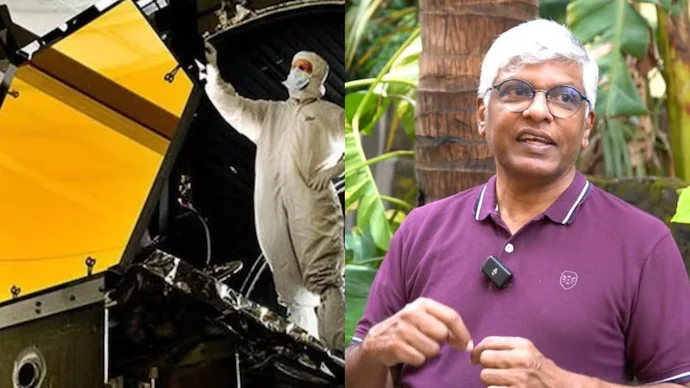
The James Webb Space Telescope, launched in December 2021, stands as the world’s most powerful observatory. It has captivated scientists worldwide with its groundbreaking discoveries, ranging from exoplanets to distant galaxies and stars. Recently, it uncovered the entangled galaxies Penguin and Egg, situated approximately 326 million light years away.
Optimized for Infrared Vision
Unlike the Hubble Space Telescope, which observes primarily in the visible spectrum, the James Webb Telescope is tailored for near and mid-infrared visibility. This specialization allows it to peer back in time up to 13.5 billion years, observing light that has shifted into infrared due to the universe’s expansion since the Big Bang.
Engineering Precision
Sathyan Anandakrishnan, Head of the James Webb Telescope Pointing Control Team since 2004, emphasizes the critical role of precise pointing control. His team ensures the telescope remains stable, enabling astronomers to capture detailed images. They also manage potential technical issues, such as malfunctioning reaction wheels or gyroscopes, to safeguard the telescope’s optics from solar damage.
Advancing Scientific Understanding
Anandakrishnan underscores the telescope’s ability to observe infrared light, which penetrates cosmic dust that scatters visible light. This capability unveils the composition of celestial phenomena like exploding stars and nebulae, shedding light on their origins—whether from black holes or collapsing stars.
Public Impact
Anandakrishnan notes the importance of sharing such discoveries with the public, who benefit from understanding the universe’s composition and evolution through visually informative, colored images.
In essence, the James Webb Space Telescope continues to push boundaries in astronomical research, offering unprecedented insights into the cosmos and its enigmatic past.


